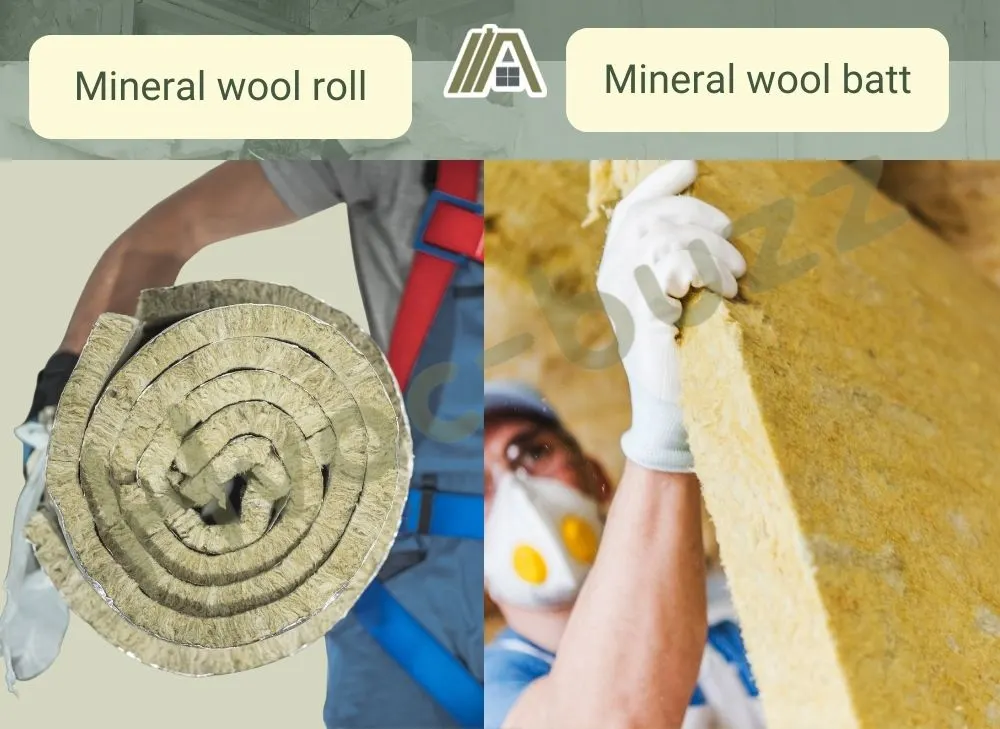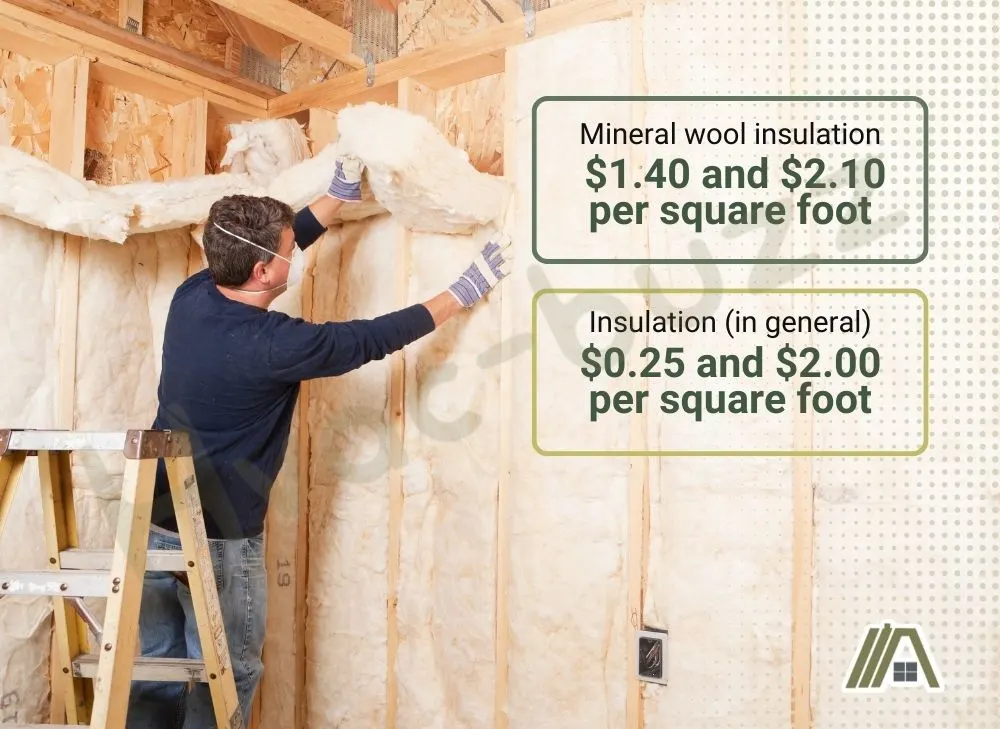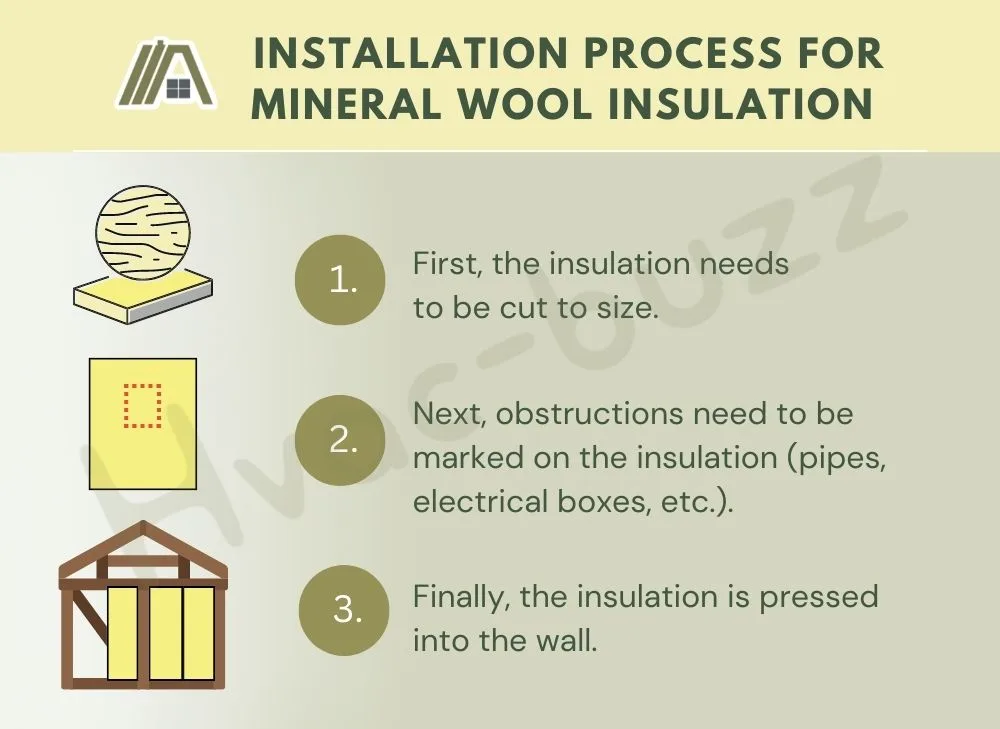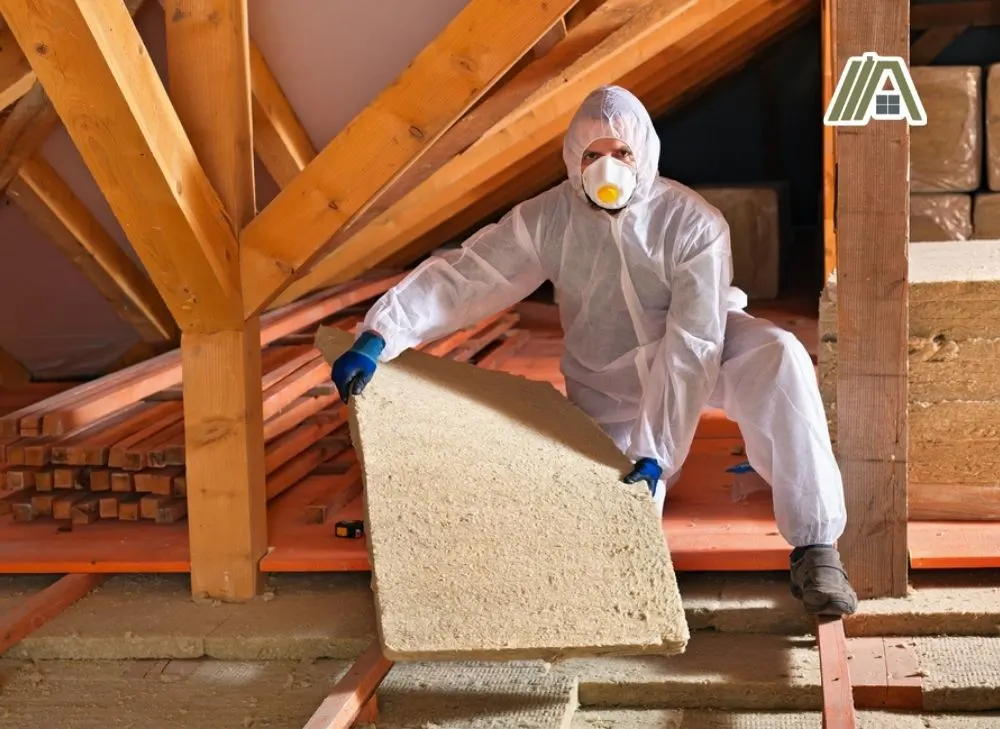With so many insulation options out there, it is important to check everything that is available to you. One of the more under-the-radar insulation choices is mineral wool insulation. Yet, one should consider mineral wool insulation, as it may be one of the best options out there!
This article will give you an in-depth look at what mineral wool insulation is. We’ll also discuss things like costs, pros and cons, and the effectiveness of the insulation. This article really is a one-stop shop for all you could ever hope to know about mineral wool insulation.

Mineral wool insulation can be rock or slag. It is fibrous and brown. The R-value is 2.8-4.3 per inch thickness. It is slightly more costly and a little more dangerous to install than other insulation types. The danger is from inhaling fibers and the binding chemicals.
What Is Mineral Wool Insulation?
Mineral wool insulation (amazon link) is a fiber insulation. Unlike fiberglass insulation (which is made of glass), mineral wool insulation is made of natural materials.
There are two different types of mineral wool insulation for homes.
One is rock wool (amazon link), which is made from stone fibers. The other is slag wool, which has fibers made from the waste of iron ore.
Mineral wool insulation has a lifespan ranging between 30 and 80 years, depending on which type of mineral wool is used.
The location of the insulation is also an important factor in the projected lifespan of the insulation.
For example, a crawl space may only allow for 10 to 40 years because it experiences a lot of dampness. By contrast, insulation in a basement can have a lifespan of 30-50 years.
So, while the lifespan of the insulation on its own is important, where it is used is a significant factor as well.
Appearance and Use
Mineral wool insulation looks more compressed and sheet-like than the well-known, fluffy look of fiberglass insulation. It tends to be a brownish color, rather than the yellow or pink that fiberglass insulation normally has.
Mineral wool insulation most commonly comes in rolls or batts. Rolls are exactly as they sound; large rolls of the insulation. Batt insulation comes in flat sheets, which are pre-cut and can come with a paper or foil facing, but not all come with this feature.

Mineral wool insulation can be used in any setting where insulation is needed. This includes attics, roofs, ceilings, floors, and walls.
Batts are best used in walls and floors/ceilings because of the way they are packaged. The flat packaging condenses the insulation more, and is more effective at reducing sounds going from one area to another.
Inherent R-Value of Mineral Wool Insulation
Mineral wool insulation has an R-value range between 2.8-4.3 per inch of thickness.
The R-value is a measure for how effective the graded insulation is at resisting heat flow out in winter and in during summer. The higher the R-value, the better the insulation is at keeping heat where it belongs.
Mineral wool insulation has a relatively high R-value per inch of thickness when compared to other insulations. This is because mineral wool insulation is especially good at keeping heat in as a result of its tightly woven fibers and its density.
The tightly woven fibers make the insulation as a whole more dense, and make it excellent at trapping air so that it can’t pass through.
Thickness Guide
Let’s suppose the R-value for a roll/batt of mineral wool insulation is 3.5 per inch of thickness (pretty much in the middle of the average range that was described above).
To achieve an R30 value, there would need to be about 8.6″ of insulation.
To achieve R38, there would need to be almost 11″ of insulation.
To reach R40, there would need to be about 11.4″ of insulation.
For R49, there would have to be 14″ of insulation.
To get R50, there would need to be about 14.3″ of insulation.
In someone wanted to hit an R-value of 60, they would need 17.1″ of insulation.

Cost of Mineral Wool Insulation
Mineral wool insulation typically costs between $1.40 and $2.10 per square foot.
Insulation, in general, most commonly ranges between $0.25 and $2.00 per square foot.
Mineral wool insulation tends to be higher in cost for a few reasons. One of which is that mineral wool insulation is very good at keeping heat in one area. It is also valuable because of the noise reduction factor that comes with mineral wool insulation.
More benefits of mineral wool insulation (as well as some drawbacks) will be discussed further below. The benefits that will be discussed should all be noted as contributing to the slightly higher price range of mineral wool insulation.
Is It Easy to Install?
The installation process for mineral wool insulation is a fairly simple and straightforward task that can be easily handled by a single, inexperienced installer.
First, the insulation needs to be cut to size. Unlike some other types of insulation, the mineral wool insulation won’t compress, so cutting can’t be done with a razor and pressing down. Don’t worry, though! All you need is a bread knife to get through the fibrous material.
Next, obstructions need to be marked on the insulation (pipes, electrical boxes, etc.). Once marked, these spots should be cut out of the insulation.
Finally, the insulation is pressed into the wall. No staples! Because of the density of the insulation and its not having the potential for being compressed, no staples are needed because the fit is so snug.

Is Mineral Wool Insulation Dangerous?
One of the dangers with mineral wool insulation is the potential of fibers breaking off and becoming airborne. If inhaled, such fibers can cause minimal to serious health problems (although it is not on a par with the dangers of asbestos).
Another problem with the mineral wool insulation is the glue/binder that is being used to hold all of the fibers together. The binders that are used (there are two that could be used) are known to cause cancer. If too much of this binder start to enter the air, it can be a serious health risk.
Although other fibrous insulation has the same problem as the mineral wool insulation in regards to the fibers entering the air, the binding agent used in mineral wool insulation is specific to this type of insulation. This means it is a danger only associated with mineral wool insulation.
Benefits of Mineral Wool Insulation
One significant benefit of mineral wool insulation is that it is resistant to moisture.
Moisture and insulation don’t mix as the moisture can make the insulation less effective at retaining heat, and can also lead to mold growth.
So, moisture-resistant insulation is a huge plus!
As described above, mineral wool insulation is quite good at reducing noise as well as trapping heat within the fibers.
Mineral wool insulation is nearly fireproof and will only start to burn in temperatures exceeding 1,800 °F. This is beneficial because it is almost guaranteed that the insulation won’t start or contribute to a fires initial spread.
Mineral wool insulation is also easily installed by yourself, so no extra cost will be needed to pay for labor.
Drawbacks of Mineral Wool Insulation
Any of the points described in the danger section regarding mineral wool insulation should be considered a drawback of the material.
Another unfortunate part of mineral wool insulation is the need for protective equipment during the installation. Specifically, gloves and a mask would be needed to prevent from fibers going under the skin or being inhaled.

Although the protective equipment is not unique to mineral wool insulation, the significance of wearing a mask is greater due to the glue that is used in binding the fibers together.
This is a drawback because this equipment may add to the cost of the installation.
Mineral wool insulation does cost more than other insulations and has a wider price range. This is to say that even if you were to go with an expensive fiberglass option, the expensive fiberglass may still be less than or in the same area as the low end of mineral wool insulation.
Sources
https://airflowacademy.com/how-long-does-insulation-last/#Mineral_Wool_Insulation

